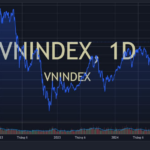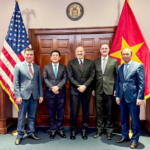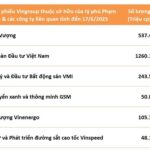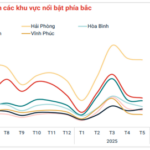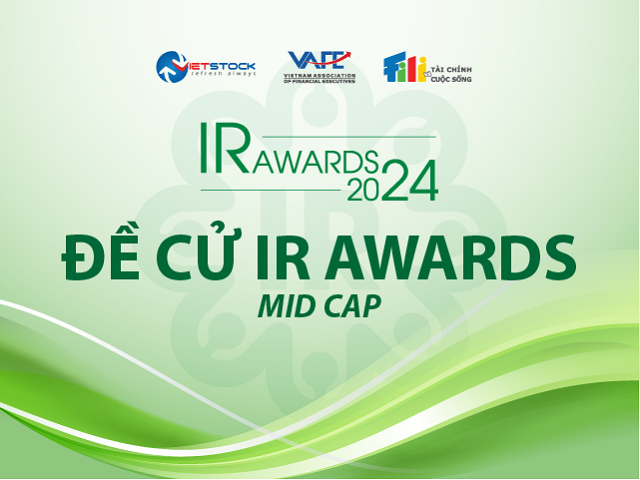In this insightful discussion, we delve into the hottest macro-economic, trade, and geopolitical issues, along with effective investment ideas and strategies for the latter half of 2025.
Macroeconomic Orientation for the Latter Half of 2025: Navigating Through the Fog of Uncertainty
Ms. Tran Thi Ha My, Senior Macro Analyst at Rong Viet, kicked off the workshop with a strategic outlook on the macroeconomic landscape for the latter half of 2025, especially amidst the impact of “Trump 2.0” policies—variables that could reshape the global trade landscape.
Amidst the uncertainties in the global economy, Vietnam is expected to maintain its positive growth trajectory in 2025. However, external variables such as tariffs and geopolitical tensions will create a “fog of uncertainty,” making the growth outlook more challenging to predict.
According to Rong Viet’s expert, while the economy is on the right track, it still needs a sturdy “macroeconomic compass”—internal reforms—to navigate, coordinate, and sustain long-term growth. This compass entails prioritizing three pillars: maintaining macroeconomic stability, especially in inflation and exchange rate control; flexibly utilizing policy space to promote selective and efficient growth; and promoting private sector reforms to create a crucial impetus for long-term growth.
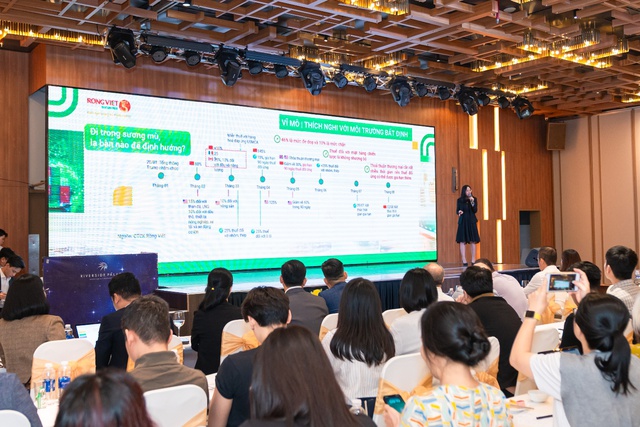
Dialogue with Enterprises: Diverse Perspectives from Real-Life Stories
The panel discussion, “Dialogue with Enterprises,” moderated by Ms. Dang Thi Lan Huong, Deputy General Director of Rong Viet Fund Management Company (VDAM), featured insights from leading enterprises across sectors regarding their adaptation strategies and growth prospects for the latter half of 2025.
In the financial sector, representatives from ACB and OCB shared their outlook on credit growth and discussed how banks are pushing policies to support manufacturing and export businesses, as well as adopting technology to optimize operations. Meanwhile, HDC appreciated the trio of laws on real estate, new housing, and the policy of merging provinces, considering it a significant boost for their projects with transparent legal frameworks and their expansion into industrial real estate.
In the manufacturing and consumer sectors, STK emphasized the role of ESG and recycling in the textile industry and shared their strategies to cope with tariffs and promote a green supply chain. Regarding industrial real estate, SIP acknowledged stable production in industrial parks and their proactive approach to attracting new FDI with a “nest-cleaning” strategy, developing an ecosystem of added-value utilities. Given the new tariff and tax regulations, Masan affirmed their sustained growth trajectory thanks to flexible distribution strategies and their commitment to modern retail market standardization.
This session not only reflected the specific challenges faced by enterprises but also showcased their proactive spirit, adaptability, and determination to chart their path amidst the volatile domestic and international market dynamics.

Investment Strategies for the Latter Half of 2025: Attractive Valuations but Selective Investment Needed
The stock market is entering an attractive valuation zone as most risks have been priced in. Amidst a stable macroeconomic environment, profit recovery, and supportive policies, Rong Viet’s expert recommends that investors maintain discipline and flexibility in seizing opportunities. The mantra of “always investing is the key to prosperity” still holds value, but it should be coupled with selectivity and discipline.
In terms of portfolio allocation, Rong Viet suggests focusing on sectors with strong fundamentals and policy support, including banking, real estate, oil and gas, utilities, essential consumer goods, insurance, technology, and aviation services. Among these, banking remains a key sector, exhibiting all three critical factors: low valuation, stable profit growth, and expected policy support in the latter half.

In-Depth Discussion: US-China Trade War and the Opportunity to Reposition
The workshop concluded with a panel on “US-China Trade War and Investment Opportunities,” offering insightful perspectives on the structural changes in global trade policies. Rong Viet’s experts emphasized that the trade war presents not only challenges but also opportunities to reposition supply chains and attract international capital if Vietnam can adapt quickly and sustainably. Despite lingering geopolitical risks, investment opportunities abound for those who proactively restructure their portfolios, allocate resources wisely, and remain steadfast in their long-term vision.
Rong Viet Accompanies Investors in Riding the Growth Wave
The “Investment Strategies in a New Context” workshop marked the largest event ever organized by Rong Viet. Its success reaffirmed the trust of valued clients, investors, and enterprises in Rong Viet and testified to our unwavering commitment to becoming a trusted partner, accompanying investors on their journey towards a prosperous future.
The Ultimate Guide to Vietnam’s $3 Billion Export Success: How the Country Conquered 150 Nations and Challenged China’s Global Dominance
The United States has spent over $3.5 billion on this particular import from Vietnam, highlighting the significance of this trading relationship.
The Abundance of Liquidity but Why Hasn’t the VN-Index Broken Through Yet?
The Vietnamese stock market has witnessed an impressive influx of funds, with nearly $1 billion flowing in per session recently. This indicates a significant improvement in liquidity compared to the beginning of 2025. However, the VN-Index remains stagnant around the 1,300-point mark. What factors are hindering its upward trajectory, and how should investors navigate this scenario?
The U.S. Proposes Ministerial-Level Negotiations with Vietnam for the First Time
For the first time, the United States has proactively proposed minister-level trade negotiations with Vietnam within the framework of the bilateral Trade and Investment Framework Agreement (TIFA) talks.






























